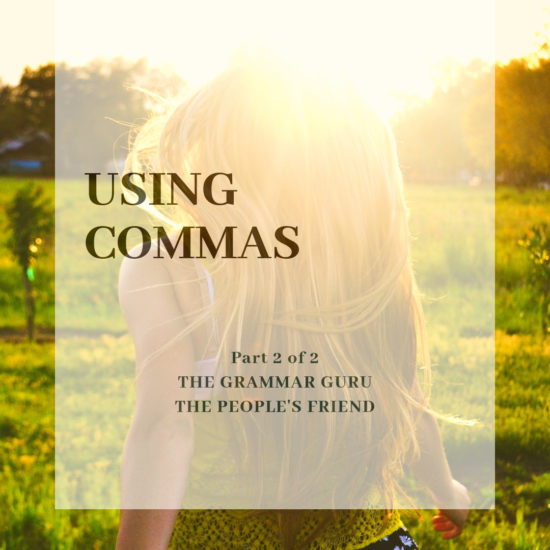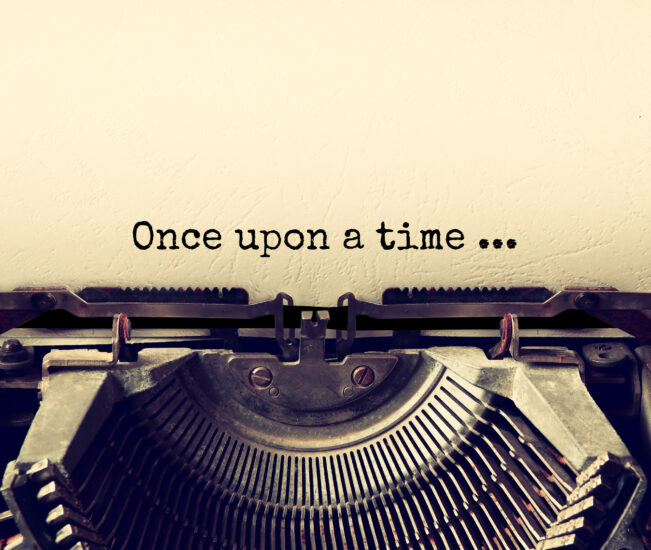
This week, the Grammar Guru concludes the discussion of the lowly, but important, comma . . .
As Parentheses
Commas can be used to separate out additional information in your sentences (brackets or dashes can also be used). The additional information between the commas is information that could be removed from the sentence without affecting its meaning.
So “Iain, who has never had necrotising fasciitis before, was stunned by the doctor’s diagnosis.”
The sentence above will still make sense even if the words between the two commas were removed.
Always remember to close your parentheses, otherwise it is unclear which information is the “additional” information.
“Iain saw the doctor, Hawley Crippen on Tuesday.”
One missing comma and the doctor’s name is suddenly “Hawley Crippen on Tuesday”!
*A note on titles
“The doctor” is a description of a person. Descriptions can be separated from the rest of the sentence with a comma.
So: “Hawley Crippen, the doctor, talked more about his wife than the diagnosis.” is correct.
“Dr Crippen” is the title and name of a person. Titles and names should never be separated by a comma.
“Iain arrived and was introduced to Dr, Hawley Crippen.” is incorrect.
Also:
Our baking expert, Mary Berry, discusses cake decoration.
Baking expert Mary Berry discusses cake decoration.
When Directly Addressing A Person / Character In Speech
Commas are used to separate the words used to address a person or character in speech.
So, if the address comes at the start of speech:
“Iain, why are you going to the shops?”
Or at the end of speech:
“What are you going to buy at the shops, Iain?”
Or in the middle of speech:
“It seems unlikely, Iain, that you can afford to go to the shops.”
An important note is that the address doesn’t need to be a person’s name; it can also be a title. So it is also correct to say:
“Doctor, doctor, gimme the news!”
And:
“You, sir, have necrotising fasciitis.”
Whether or not a comma should be used is sometimes subject to the vagaries of a publication’s house style.
Take a look at the below examples, and always keep in mind the “Friend” style when submitting your work to us!
Before A Quotation
A comma can be used to introduced a quotation. For example:
Iain said, “I think I’ll go to the shops.”
At the “Friend”, however, this goes against our house style (see Grammar Guru: Quotation Marks), and we would be likely to change it!
To Separate List Items
When writing a list of more than two items in “sentence form” (that is, without using bullet points), separate them with commas.
“Iain went to the shops to buy bread, milk and beer.” is correct.
In lists like the above, you will sometimes spot an additional comma before the conjunction which introduces the last item. So:
“Iain went to the shops to buy bread, milk, and beer.”
This is known as an “Oxford comma” (because it was traditionally used by the editors at Oxford University Press). While it is technically correct, it goes against our house style here at the “Friend”.
In Numbers
Commas can be used every three decimal places to make large numbers more readable.
So 10,000 rather than 10000; 500,450 instead of 500450.
Sometimes, however, you will see a number with three decimal places or fewer (<9999) without the comma. Whether or not this convention is followed is a question of house style. The “Friend” chooses the comma every time!
Phew! We made it! If all has gone to plan, when and how to use commas will be much clearer to you than it was all the way back at the beginning!
Keen to keep your writing sharp? Read more from the Grammar Guru by clicking on the tag below.
See Part 1 of the Grammar Guru’s guide to commas here.




